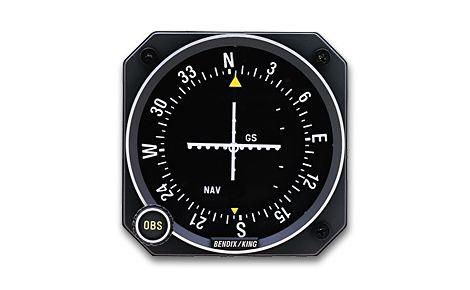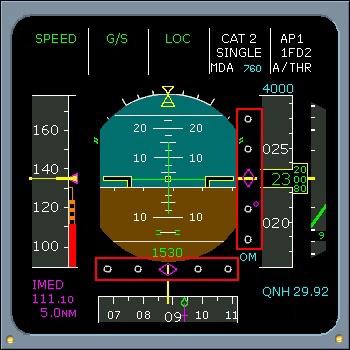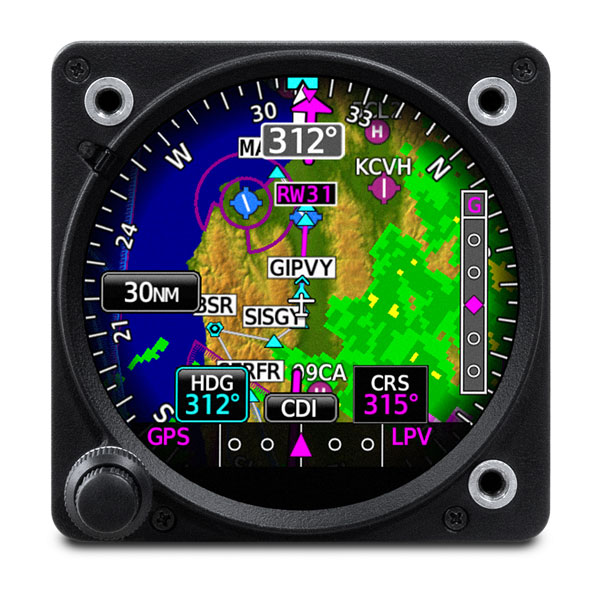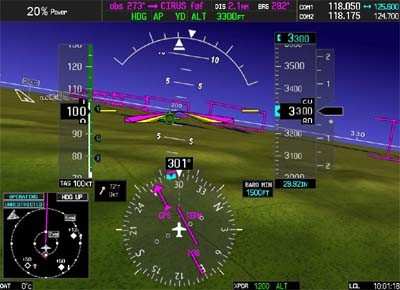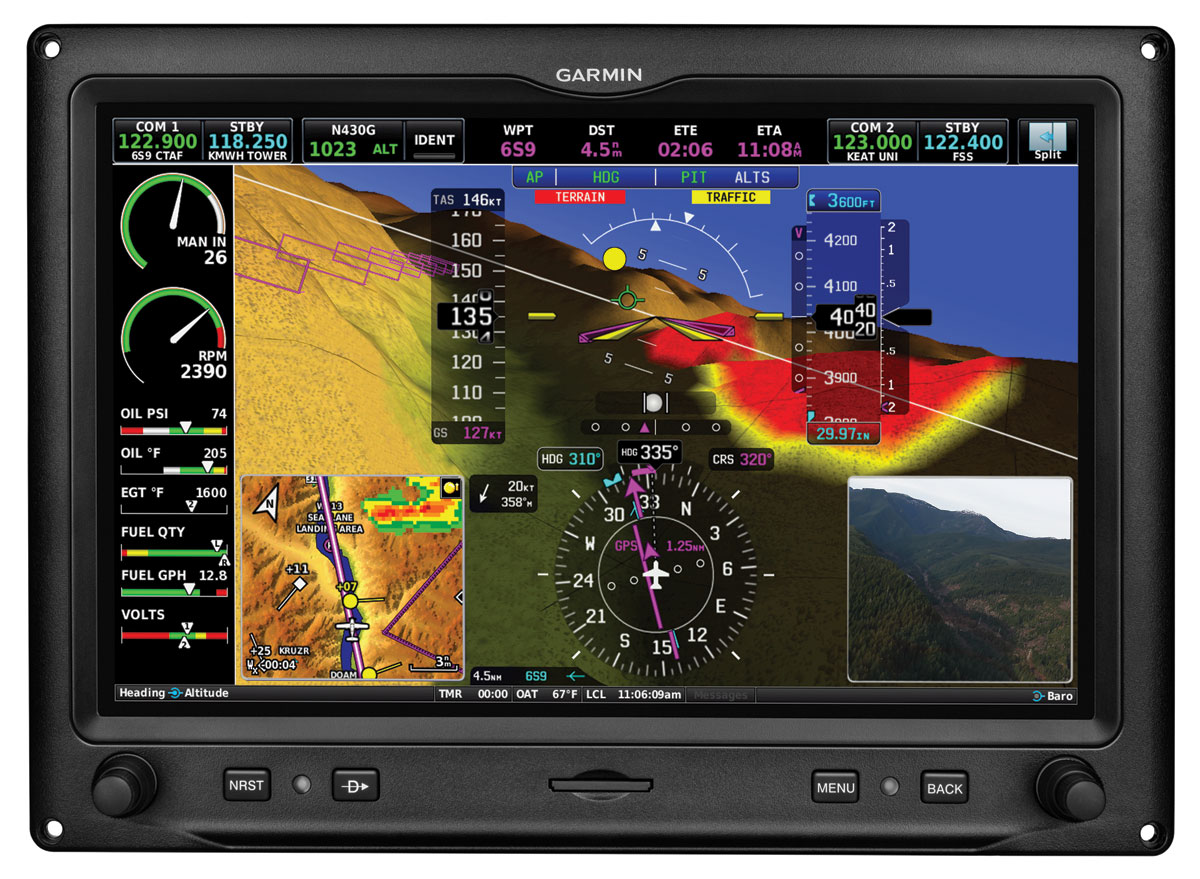Well, let me summarize for the tl;dr crowd: "Blah, blah, blah, I don't care that they're already doing all the stuff I said they should do in my last post, they still suck, blah blah, bah humbug!"
Did I get that right?

No, that’s not what I said and you’re just being an ass for no reason. As usual I’ve made no personal attacks and you have. Congrats again.
I said they should do it on all products and specifically the G5 we were all discussing and its ancient depiction of instrument needles.
I didn’t say the overpriced G3X wasn’t available.
Remember this started with essentially... “Why is this weird diamond thing and a tape doing strange things compared to needles?”
“Because both are hideously outdated ways to depict something on a graphical display.“
Not really. I bet Garmin would be happy to, if the FAA allowed it, sell you the software for your avionics for $100/year and the hardware for $1500... And then sell you the software certification paperwork for $15,000. I mean, look at the difference in price between the experimental and certified versions of the same things. The certified stuff costs a multiple of the experimental stuff that's running the same hardware and better software.
The only evidence the certification actually costs roughly double is the manufacturer saying so. FAA is silent on it, and technically couldn’t confirm or deny it even if asked.
There’s no third party to confirm. Numbers aren’t public.
Whether the cost is really there or the certified just have a higher profit margin, isn’t really known. It’s assumed.
Pilots THINK it’s a real doubling in costs to certify, and it’s cultural now to say so, but there’s nobody doing teardowns to look for hardware differences inside like we do see in nearly every other aspect of tech these days.
(Not that the aviation press would even know how.)
Also... who says FAA doesn’t allow the model you gave above? They don’t care how you price those things as long as an avionics tech installs them.
I mean it probably would confuse the hell out of them and break their brains, but there’s nothing that says it isn’t allowed. ;-)
And is of total **** quality. There are 20-plus-year-old Garmin 430s that still work like brand new and they've been exposed to extreme temperatures and quick temperature changes and vibration and all kinds of other stuff for 20+ years! Screw that laptop display into your plane's panel and see how long it lasts. I give it a year. Maybe two.
Garmin’s displays are coming out of the same building in China. Again would bet big money.
Yes, they’d pay about $300 to have that display have a touch screen added and a shake and bake test. You missed the bigger picture again.
If a laptop display of “bad quality” (they’re not, by the way — corporate laptop users are way harder on devices than any panel vibration ever will be) is $100 wholesale — and multiple generations better than what G is selling — they’re capable of getting a panel that meets their requirements for absolutely no more than $300.
Probably are.
That doesn’t justify a five figure sales price.
You know how much NASA paid for that?
Doesn’t matter. Copying it on modern hardware is nearly free. They already did it in fact. G3X. Right? Code is done. Certified even. Port it.
Again it was just the point that these graphical depictions aren’t in any way new.
Put em in the G5.
Put em on the GTN screen.
Put em in an even cheaper display, not yet released.
Also, my GI 275 can do everything you've asked for so far except the highway-in-the-sky depiction, and it cost a tiny fraction of the airframe. Nobody is spending "the price of the entire airframe" on avionics.
And the discussion was specifically about the graphical depiction of an ILS needles.
So ... it doesn’t do it.
LOL.
Put em in the GI 275!

Sure there is. Zoom out on your fancy map, and you could be many miles off course without being able to tell. Keeping the needles available gives you a consistent display of how far off course you are.
It has nothing to do with the choice to depict needles. Lots of ways to display how far off course. Already some in text boxes on every G product even.
Some manufacturers which I won't bother naming, you're certainly correct. Garmin, OTOH, does continue to make their UIs look better and more modern as time goes on. The difference between the original G1000 and the G1000 NXi, for example, is quite striking when you actually fly them (We have 2x original and 1 NXi at the moment so I switch back and forth all the time). I would say the same for the GI 275 vs the G5.
Already stipulated. The aviation world is so old we spooge hard over what are ancient upgrades everywhere else. G was used as the BEST example. Others are even worse.
Of course a G looks wildly awesome compared to those. Ooh ooh color TN LCD panel vector graphics. Ooh! LOL.
Bleh.
The difference between aviation and the rest of the world is, nobody is still using their 1999 PowerBook. Computers tend to be replaced FAR more often than avionics, and avionics don't force you to update every freaking Tuesday before you can shut your airplane off so they're often running fairly ancient software.
The G5 wasn’t released in 1999. It’s depictions of radios and mechanical gadgets hooked to radios was outdated by decades — the day it was released.
It could display what the G3X does.
(And for the record, no consumer OS updates every Tuesday.)
To get a new graphical depiction of something other than an ancient radio needle is ONE update away. Not monthly.
Well, if it’s done right.
But again. It was about the graphics themselves. Not updates.
G5 takes serial data in, then moves virtual needles around a screen. Move boxes instead.
No need to depict old radio mechanical displays on anything anymore. Just do what’s already in the G3X. Across the whole product line.
The tech hardware contrast was intended to look outside aviation. That tech is accelerating away from avionics at red-shift speeds AND cheaper every year.
We don’t ask for better. We don’t dare. Someone will shout us down that our desires can not possibly occur and FAA is to blame! No manufacturer could ever ever possibly make a cheap high quality display that is not a picture of radio needles! Noooooo!
LOL. Ok.
Displaying stuff in better ways than fake needles just ain’t that hard. On everything.
And awesome display hardware is cheeeeeap.
And the tech gap between aviation panel stuff and everything else on displays just keeps widening.
Why? Because we like colored needle depictions I guess. Much excitement. High kwality.
Can blame it on FAA, G, somebody else — kinda doesn’t matter. You should get a lot more than line art from the 90s, on an old TN panel, with a plastic sun coating, for five figures.
Should get within a couple generations and decades of consumer grade for low four figures.
Should get digital mechanical needle replacements for less than mechanical rebuilds. Or equal. $500. Tops.
That’s just where the rest of the world has already gone. Long ago.
On displays anyway.
The BEST five figure panel mount place of them all makes excuses. Falls further and further behind. The $100 tablet app place writes nice display code and adds features.
Heck the panel place doesn’t even need to hire designers, just copy the design of the $100 guy’s stuff.
If it looks good and is a good way to depict things on a tablet for $100, it should look truly amazing in a five figure panel mount. That should be the buyers’ base expectation level.
Buyers want LCD needles I guess.

